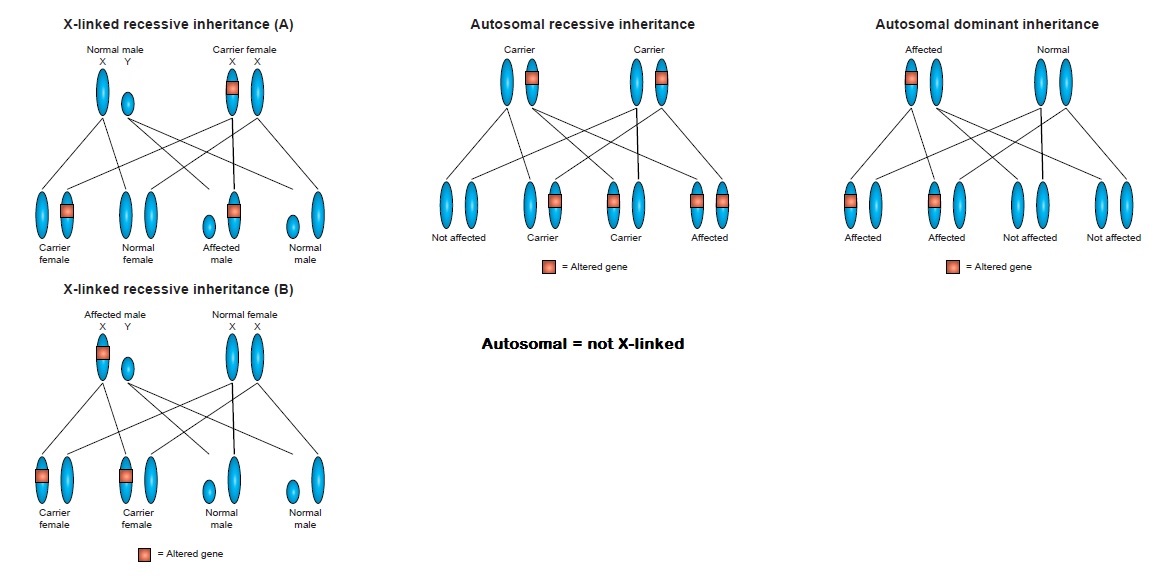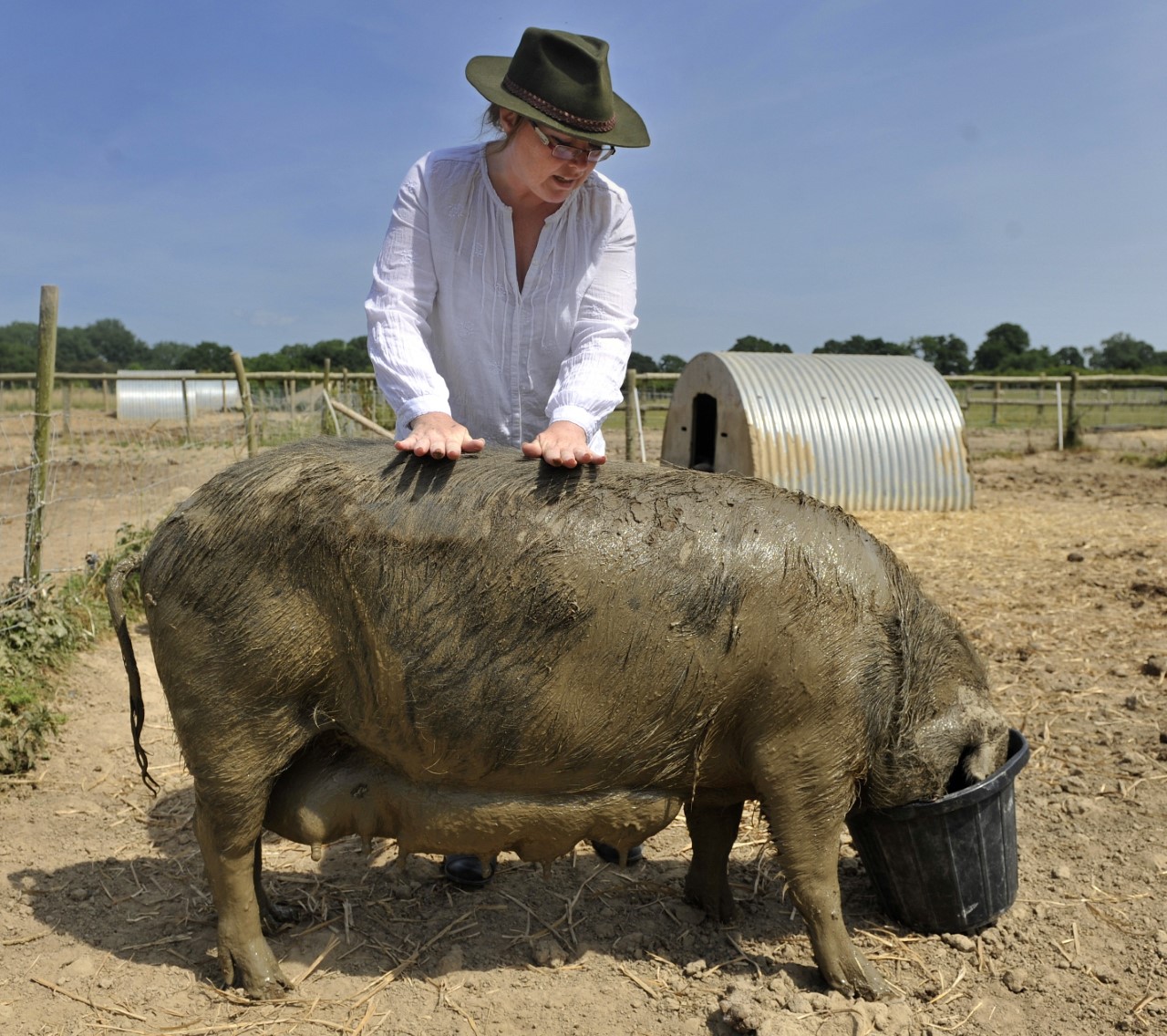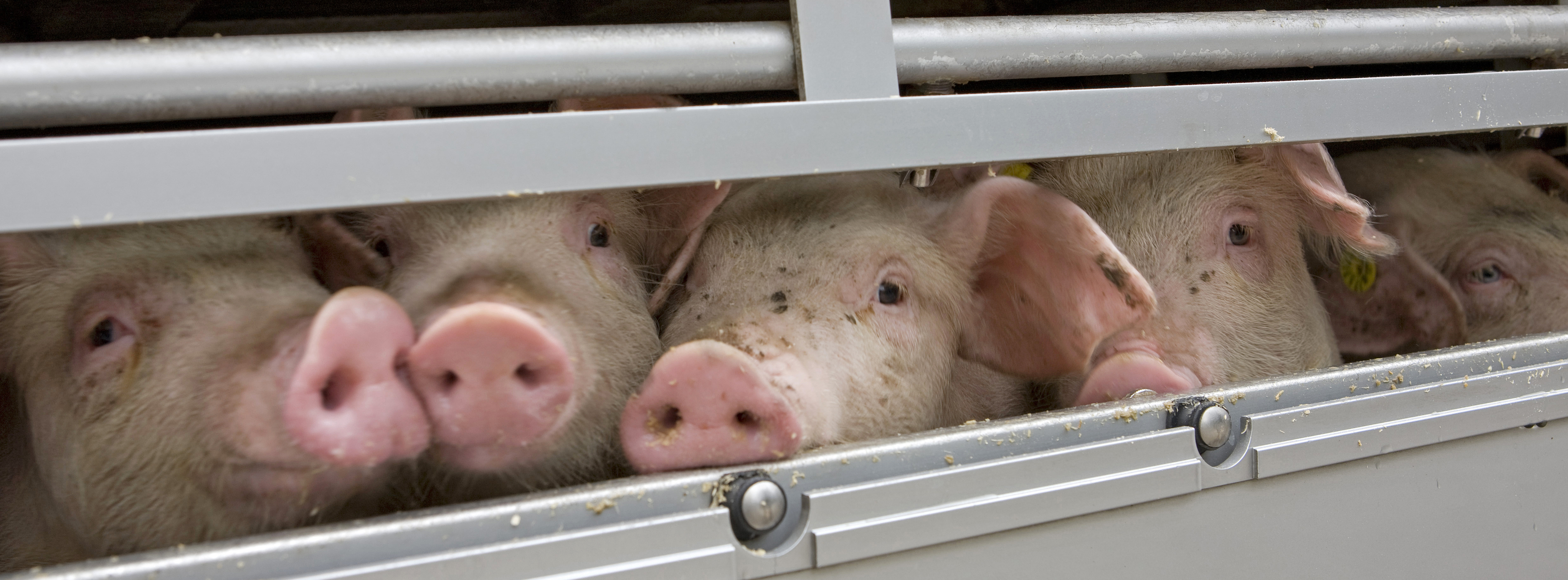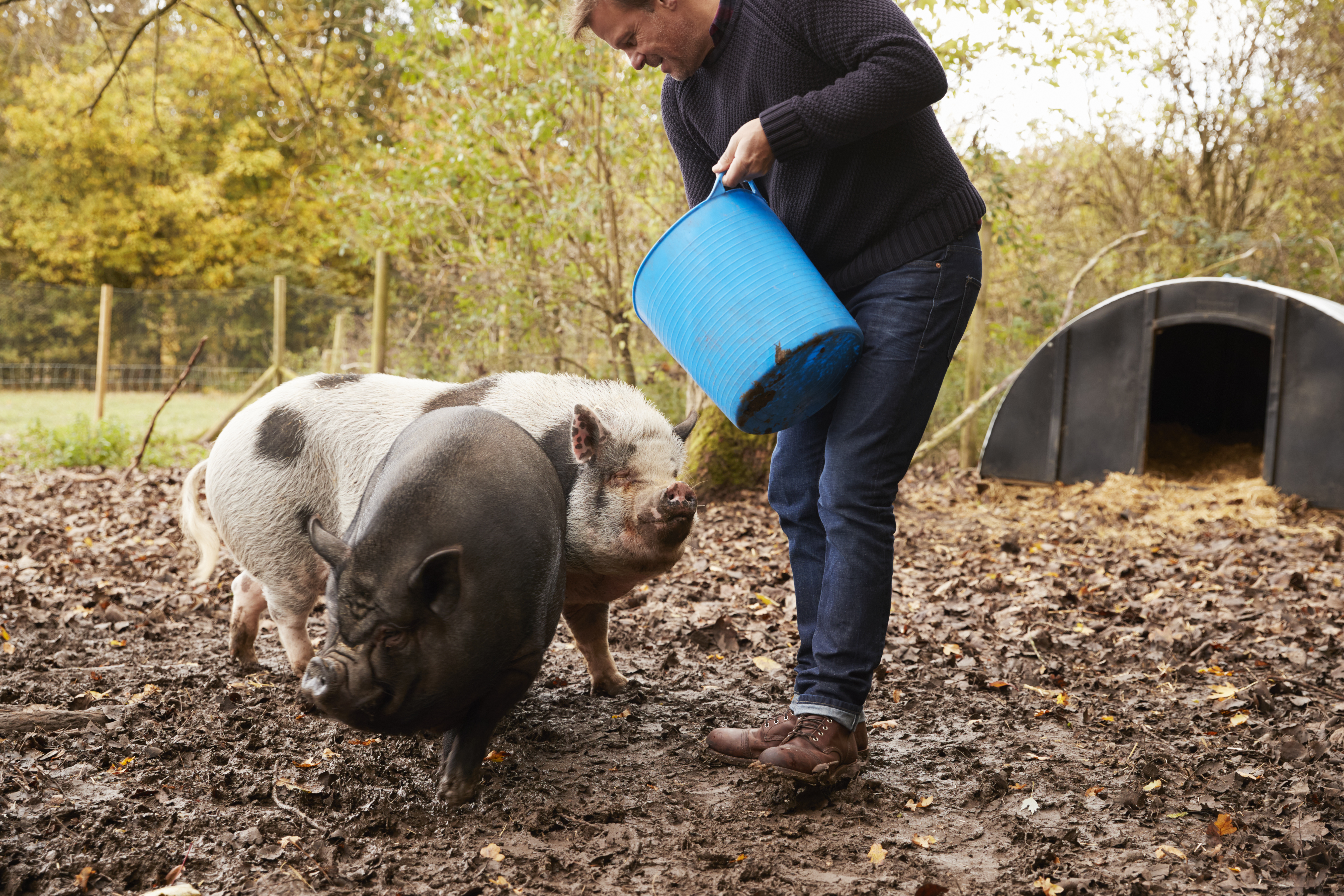



Small-scale pig keeping: the basics of breeding
Inheritance of all traits, both phenotypical and physiological, is controlled by genes but achieving those desired traits is a fine balancing act.Part of Series:
< Previous Article in Series Next Article in Series >
In straightforward Mendelian inheritance, each normal gene carries two copies, one donated from each parent, and they operate together with one as ‘back up’. Traits, both good and dysfunctional, may in some instances be carried on multiple genes but most often carried on a single gene. If both copies on a single gene do not match then, whether you see it phenotypically (visually) or can detect it with a test, depends upon whether it is a dominant gene, a recessive gene or an X-linked (sex-linked) recessive gene.
A pig with a dominant gene will display that particular trait; one with a recessive gene may display the trait or be a carrier; and one with an X-linked gene will be a carrier or affected depending upon which parent is the carrier or whether both parents are carriers.
Although both desired and undesired characteristics are inherited the same way, it has the most significance when it’s a defective version of the gene that is passed on and using a defective gene as an example makes understanding inheritance a little easier. When one of the gene pairs is undesired, eg prick ears in a lop-eared breed or an extra cley on the trotter, its ability to be passed on to subsequent progeny depends upon what type of gene it is and the status of the corresponding gene in the other parent.
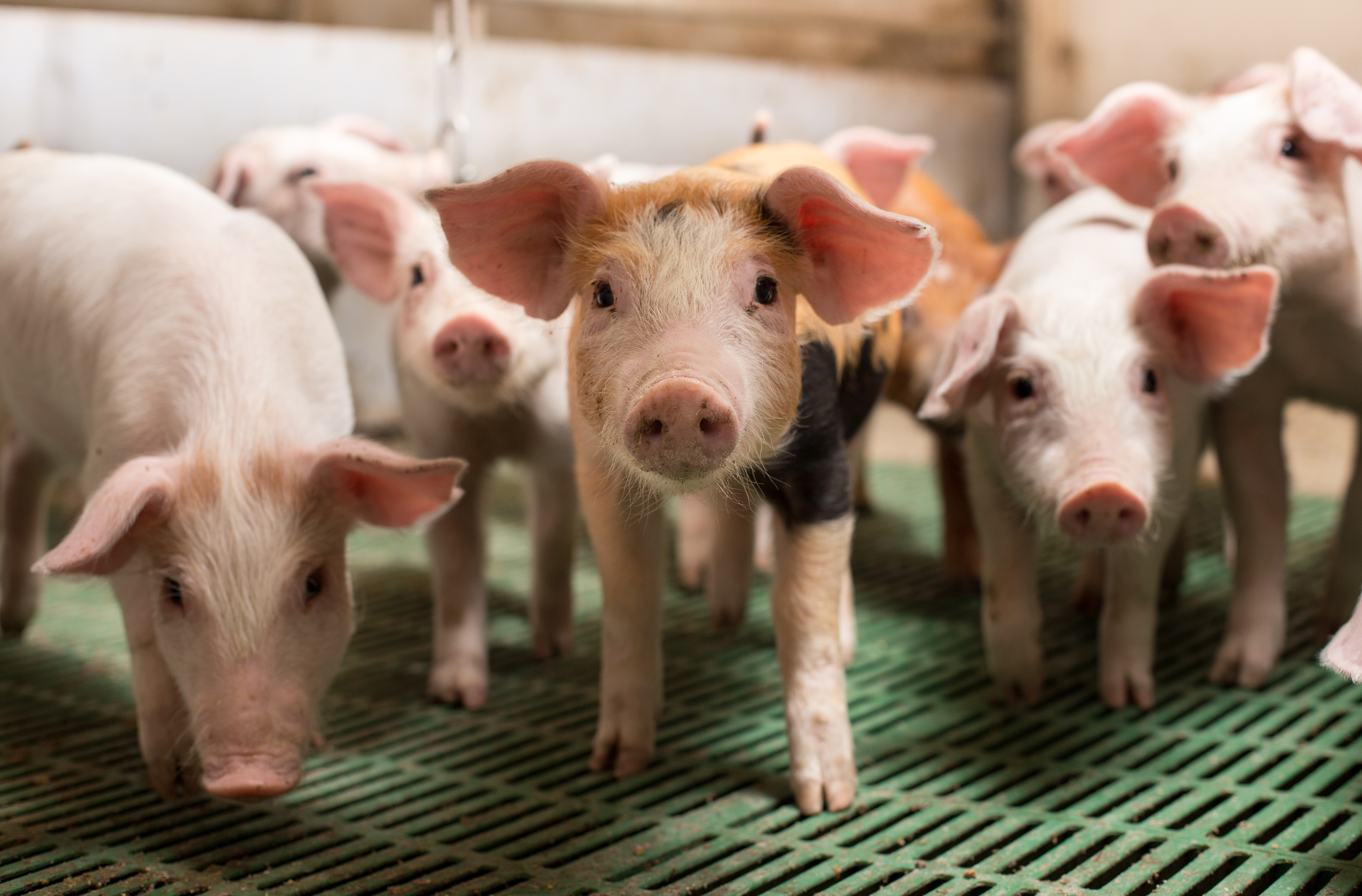
Dominant gene inheritance
If one parent has one of the pairs as a dominant dysfunctional gene and the other has a double normal gene, then there is a 50 percent chance of each piglet born displaying the trait. If both parents have one of the pairs as a dominant gene, then there is a 75 percent of each piglet displaying the trait. Of course most breeders would not use a pig with such an obvious defect for breeding but it is can still happen with unseen conditions, eg heart murmur, diabetes, enzyme deficiencies etc.
Recessive gene inheritance
When one parent has one of the pairs as a recessive gene, then the piglet may be unaffected or be a carrier. Carriers are perfectly healthy as the correct version of the gene is being used but they carry a copy of the defective gene as the ‘back up’ copy that may arise in subsequent progeny if they are mated with another pig which is also a carrier of the same defective gene.
If a carrier pig is mated to another carrier pig, then each piglet has a 25 percent chance of not having the gene, a 50 percent chance of being a carrier of the gene and a 25 percent chance of exhibiting the trait.
If the carrier was mated with a pig without the defective gene then each piglet has a 50 percent chance of being normal and a 50 percent chance of being a carrier – but 100 percent would look outwardly healthy and phenotypically free of the particular trait.
In the national herd, recessive gene carrier status may build up unseen over time and realistically achieve 20 percent of pigs in a total population before the trait started to show itself by producing double recessive gene pigs which do show the undesirable trait. Of course, 20 percent may be achieved within the same herd quite quickly if genetic diversity isn’t maintained, especially if in-breeding or line breeding is practised.
X-linked gene inheritance
To confuse the matter a little more, some genes are donated in groups with other genes. If a defective gene is transferred with the same gene that determines each piglet’s sex, it is known as sex-linked or X-linked, as these transferred genes are typically on the X chromosome. Gilts always have two copies of the X sex gene (XX) and boars always have one X from the sow and a Y from the sire (XY).
- For X-linked dominant genes in the sow, the gilts and boars have a 50 percent chance of being affected. If the sire carries the gene then all the gilts and none of the boars would be affected. This is because the gilts will always inherit their father's X chromosome.
- With X-linked recessive genes carried by the sow, the gilts have a 50:50 chance of being a carrier or unaffected and each boar piglet has a 50:50 chance of being affected by the trait or unaffected. If the gene is carried by the sire then all the gilts will be carriers and the boars will be unaffected.
The hardest to determine in a population are the recessive inherited traits, and extensive population DNA testing of case, case control, and non-case pigs are required to formally detect it.
My next column explores why inbreeding matters and how to use the co-efficient of inbreeding to minimise inheriting defective traits.







